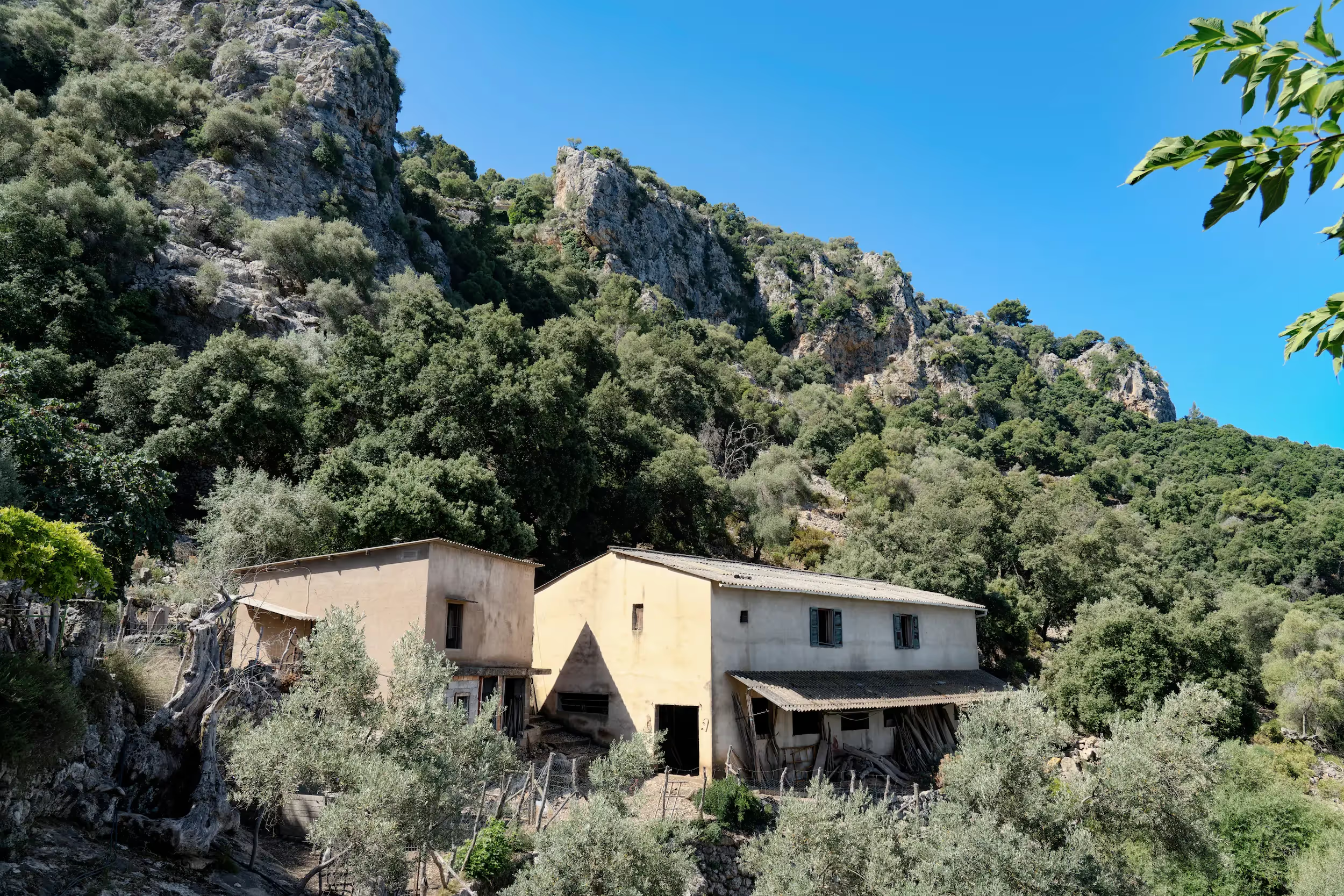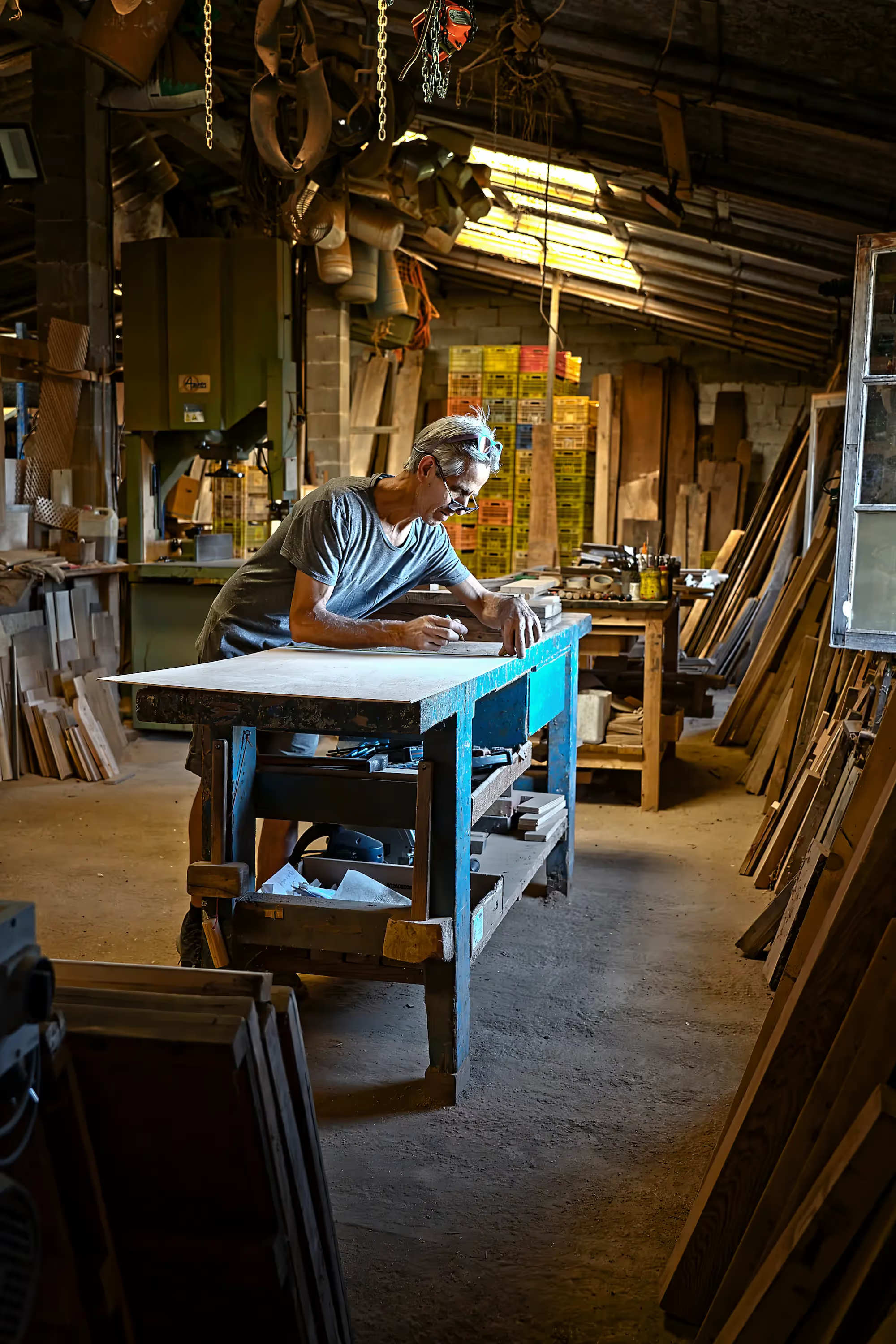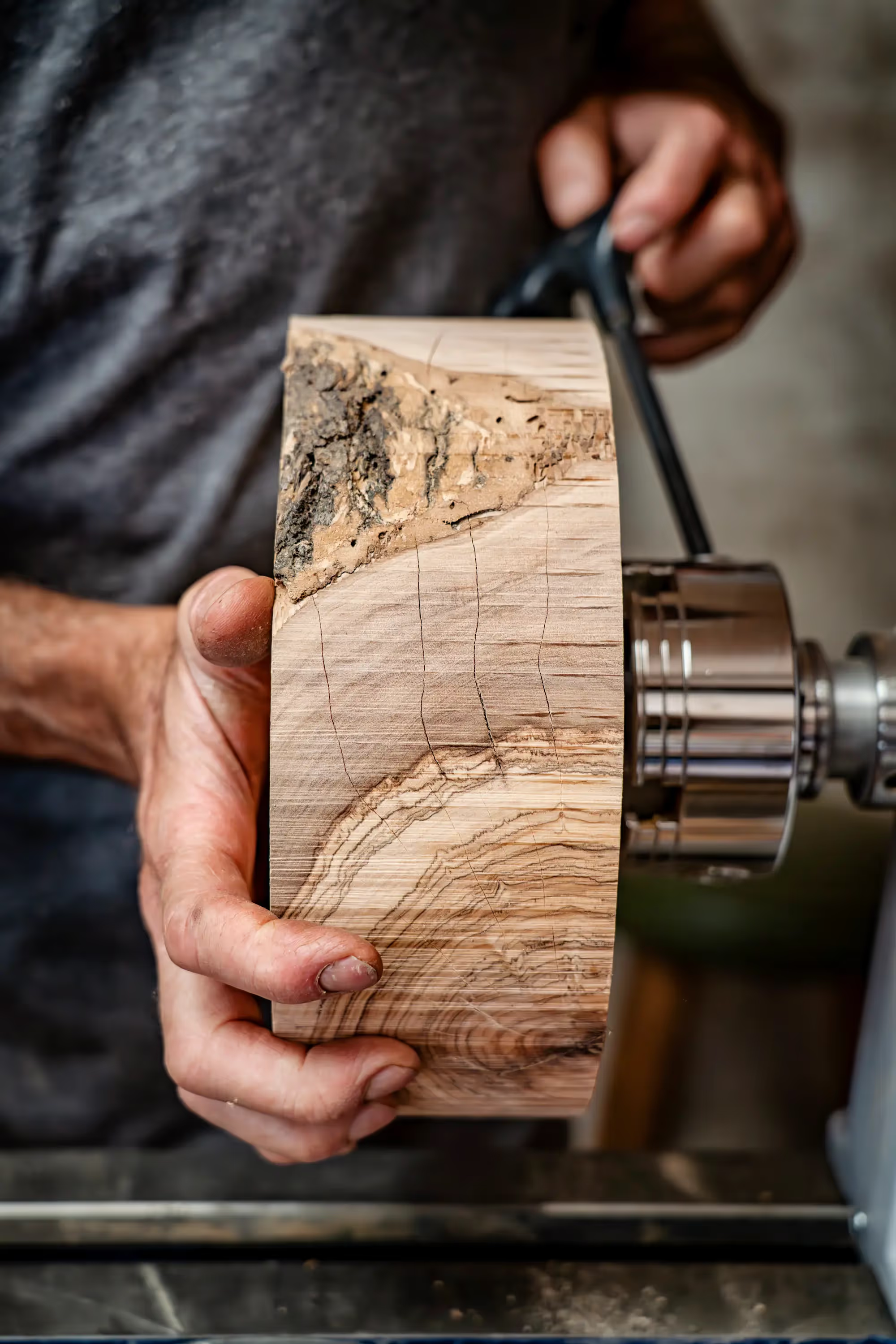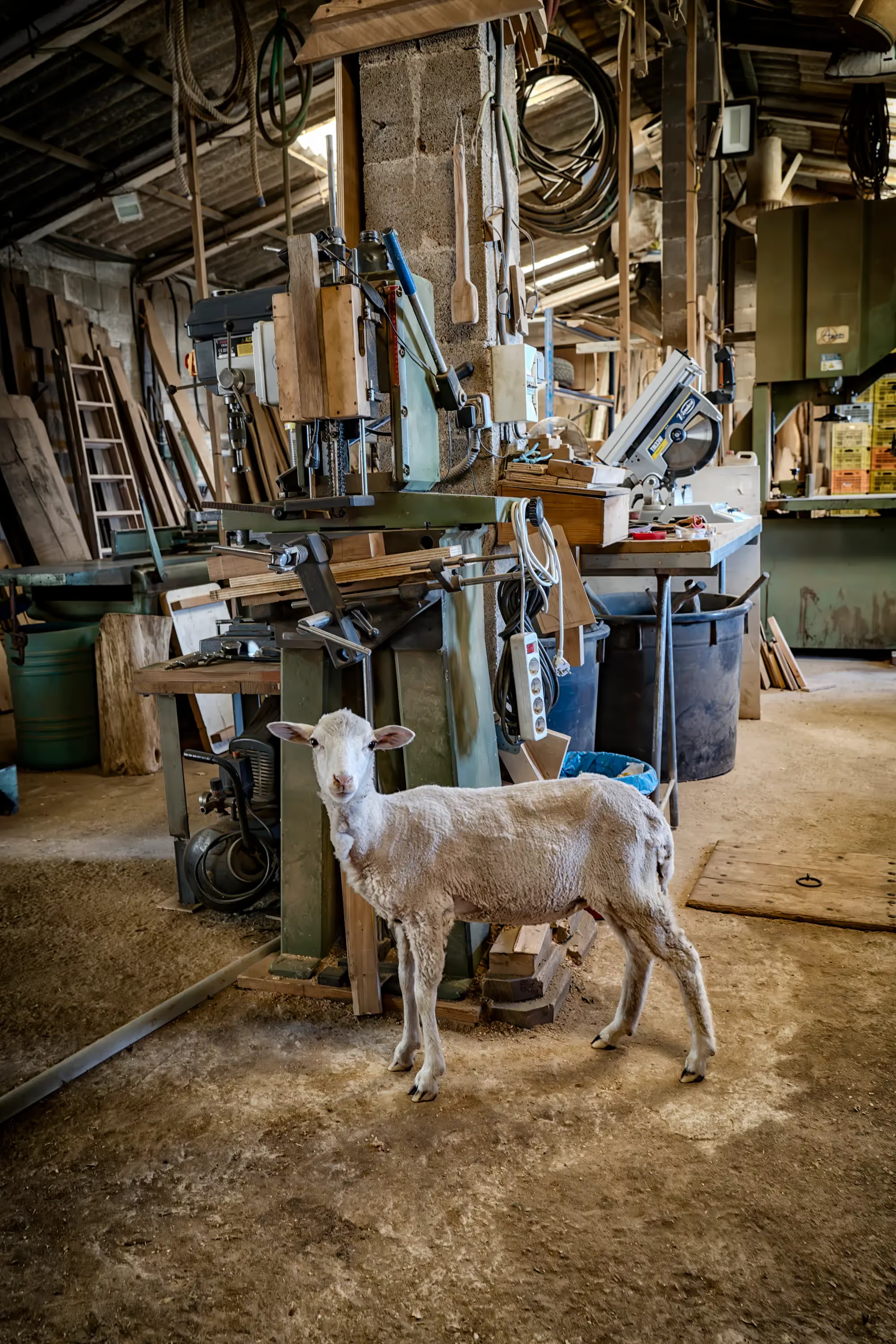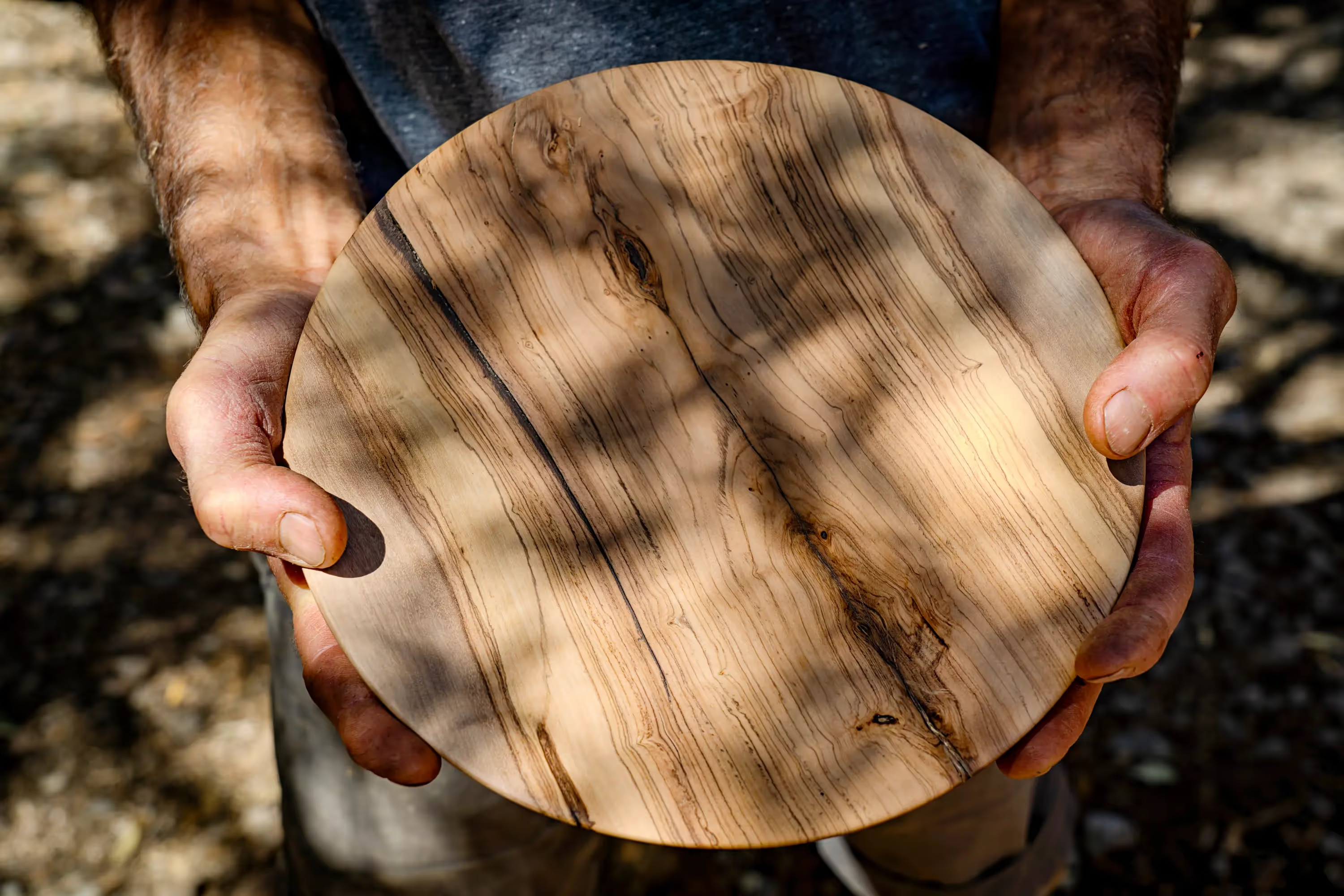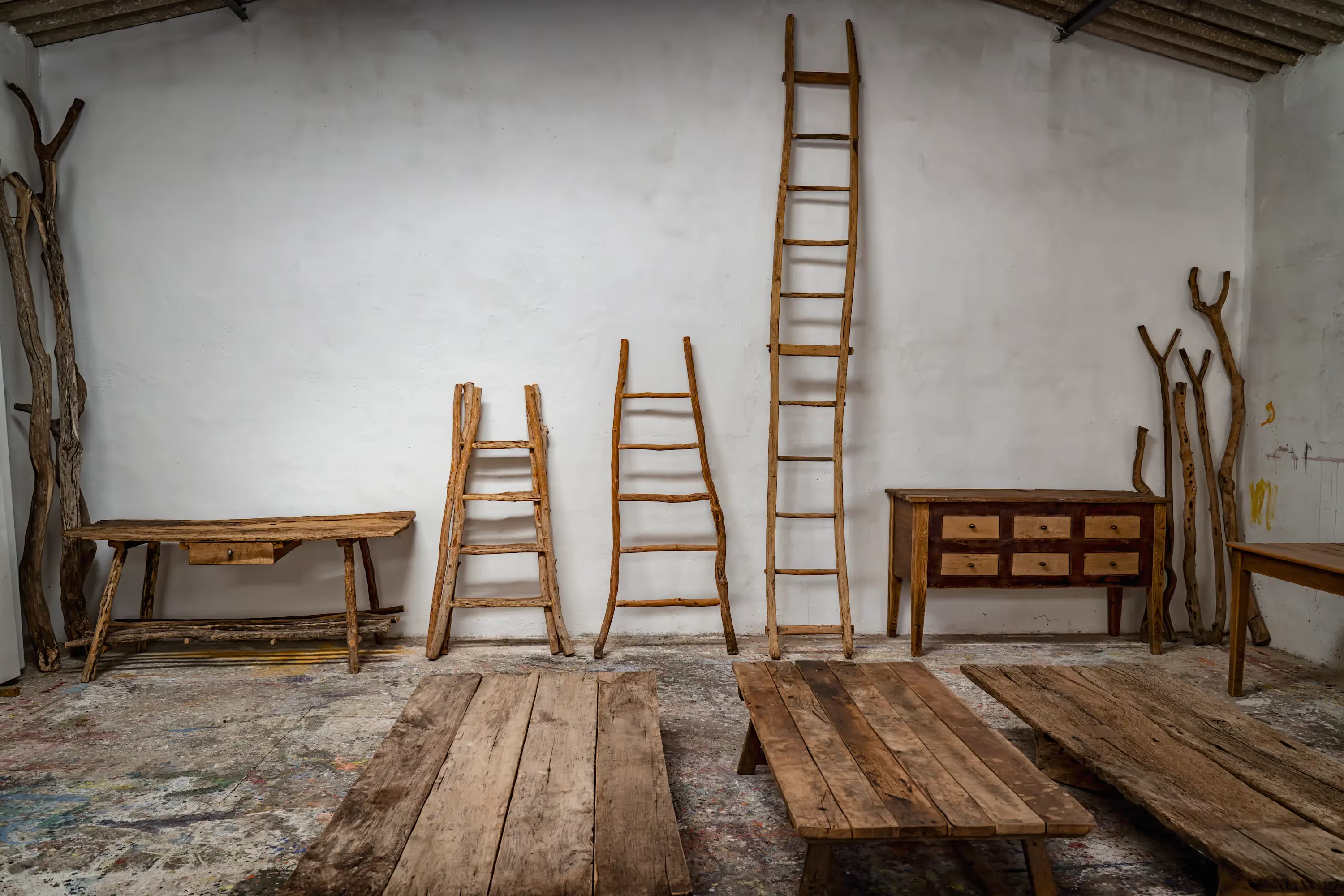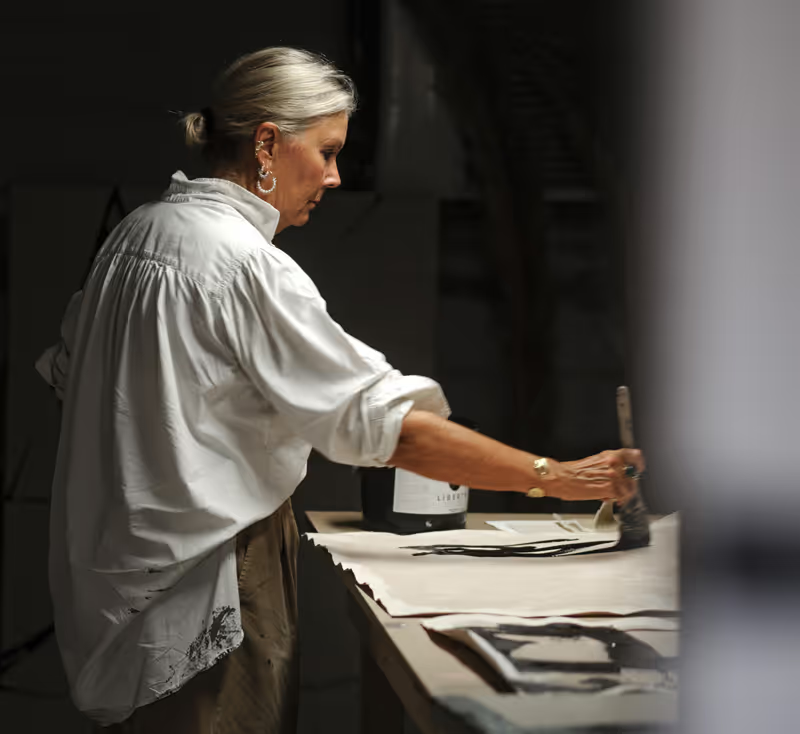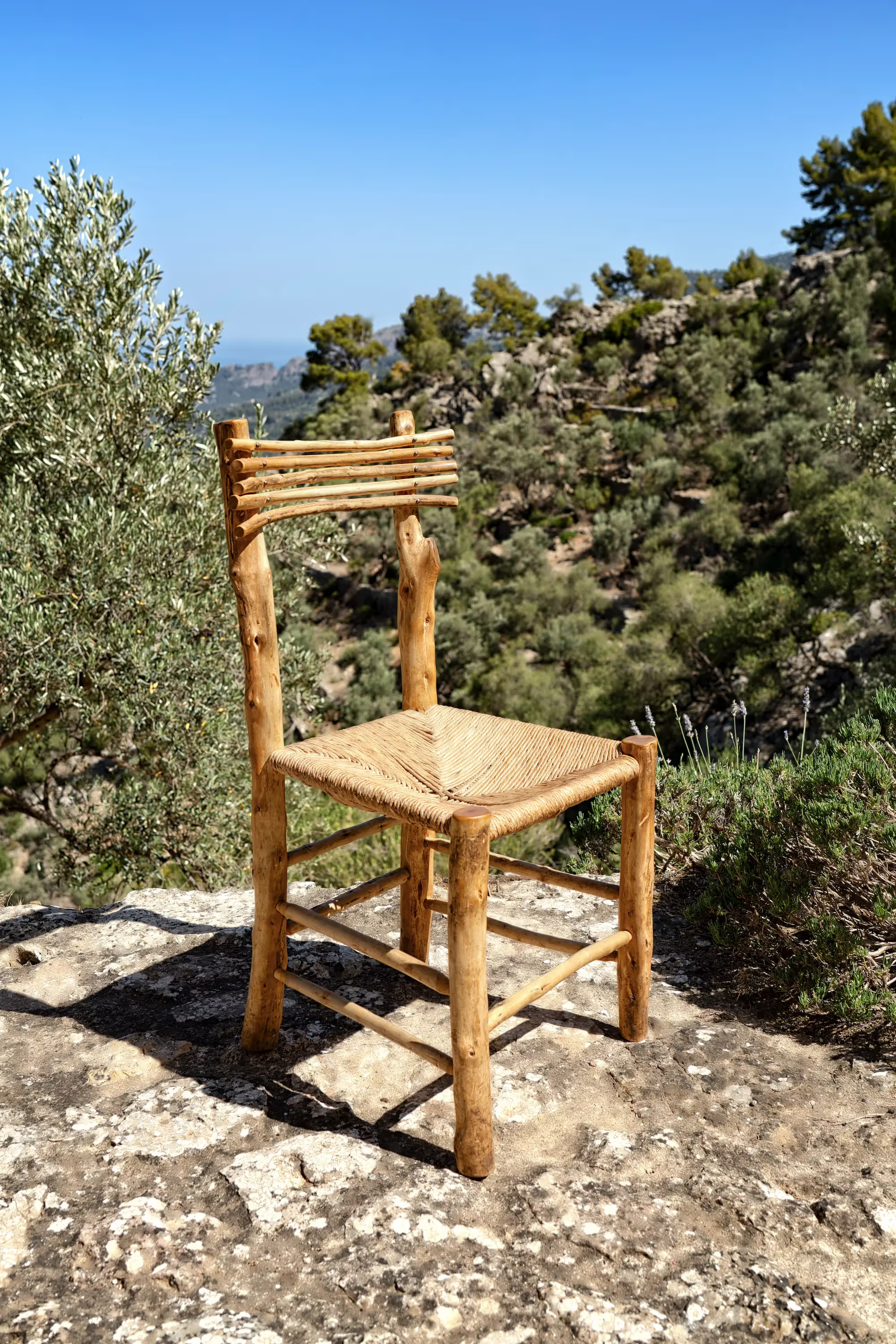
T
he journey to reach Pedro Casanovas studio is not for the faint of heart, requiring a fun, yet bumpy, winding one-lane ‘road’ that goes straight up the mountain outside of Sóller. Just when you think you can’t get much higher than the summit, Casanovas deftly steers his jeep off the road and down a long driveway, where his studio and house seem to naturally emerge among the trees, rocks and clouds.
It was Casanovas father who first found the land and built a place for his family to enjoy on weekends. It’s one of the highest homes perched on the mountain overlooking the valley, with views down to the sea. The house can theoretically be spotted down below – for those who have patience and good eyesight. His father must have had a strong sense of adventure and an intuitive eye to have selected such a hard-to-reach, yet stunning property, which he slowly constructed over the years. Casanovas grew up as a kid coming to the finca, taking care of the sheep and running around the forest, and it’s clear that the landscape is a fundamental part of his creative soul.
Casanovas was working with the forestry department, in the Tramuntana Mountains, when he started playing around with found pieces of wood in the landscape and coming up with ideas for simple and playful furniture. As more of a side hobby, he began making gates, pergolas and small items such as side tables and stools. His early pieces are often made with rows of thinner branches that creates a linear, decorative style, but very simplified. He started training with a woodworker in Sóller to learn more techniques.
